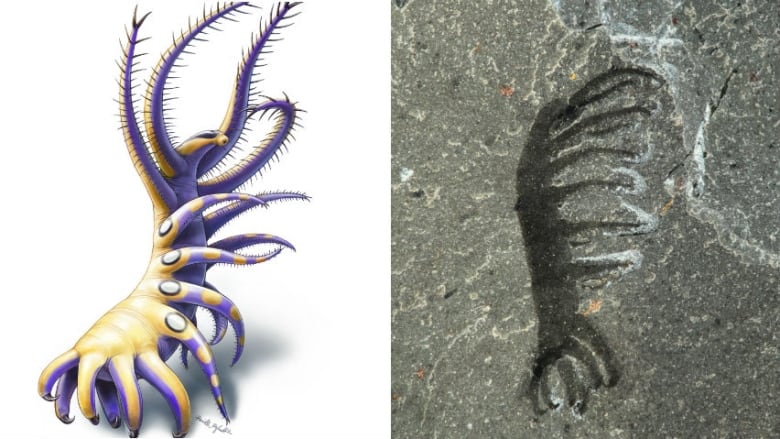New 'party worm' species identified from Rocky Mountain fossil find
I was so glad my jaw dropped, scientist says of discovery
A park visitor who found an extremely rare fossil on a guided hike in the Burgess Shale site in Yoho National Park six years ago has helped scientists identify a new species known as the party wormor dancing worm.
Jean-Bernard Caron, senior curator of invertebrate paleontology at the Royal Ontario Museum, spoke to the Calgary Eyeopener Wednesday about the species of prehistoric worm unveiled this week.

Officially known as Ovatiovermis cribratus, which means 'standing suspension-feeding worm' in Latin, the first specimen of the animal was collected in 1994 at the Burgess Shale Walcott Quarry,and later studied intensely by Caron.
Then, in 2016, Caron visited the Burgess Shale to do some field work. A Parks Canada staff member showed him a cardboard box with a few fossils that visitors had discovered while on guided hikes.
Caron recognized one fossil, found on a hike in 2011, as the same species of animal he had studied in detail for years. The fossil was slightly less well preserved, but still beautiful, Caron said.

'Very, very lucky'
"I was so glad my jaw dropped, because there was a second specimen there," Caron said. "It's something very rare, of course."
Of the quarter million Burgess Shale fossil specimens known in museum collections, this was only the second specimen of its kind to be found. Caron describes the visitor who discoveredthe fossil as "very, very lucky."
Theanimal lived at the bottom of the sea about 500 million years ago. Even with its limbs fully extended, it wasshorter than a thumb. The soft, stubby, worm-like body hada tiny head and nine pairs of legs, Caron said.

The creature likely used its three pairs of back legs to anchor itself on the sea bottom, while its front limbs sieved food from the water. The worm would have looked like it was waving its front arms or giving a stand ovation, which is where the party worm or dancing wormmoniker comes from.
The species belongs to an extinct group of marine invertebrates with soft limbs, called the lobopodians, Caron said. They are thought to have given rise to the arthropods, thelargest group of living animals today.
"I'm very excited to continue research in the field and potentially find new forms of these kinds of organisms," Caron said.
- MORE CALGARY NEWS |Calgarians smash scales and myths about eating disorders
- MORE CALGARY NEWS |Calgary real estate sales rise 24% in January but still below long-term averages
With files from the Calgary Eyeopener













_(720p).jpg)


 OFFICIAL HD MUSIC VIDEO.jpg)
.jpg)



























































































